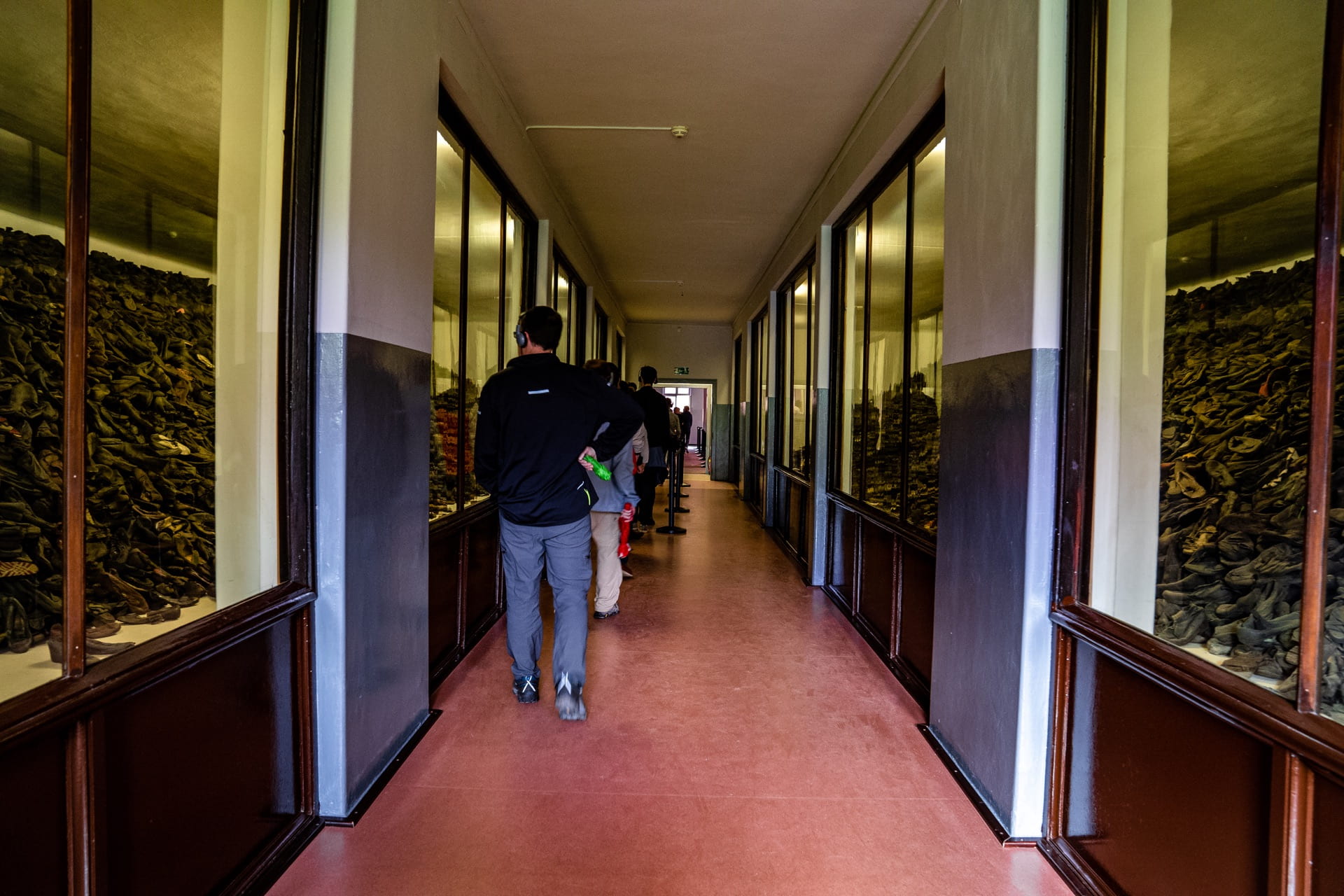Auschwitz is a place we must visit to understand the Holocaust. Assessing this site and the new knowledge I have learned is difficult. The information on the tour was not new to me, but the delivery and setting were and as such immersed me in the information. Seeing a picture of the “Arbeit macht Frei” banner and walking under it are two very different experiences. Understanding the breadth of the Holocaust by reading and listening is difficult, but seeing thousands of kilograms of human hair puts things into perspective. Walking through a room with 100,000 adult shoes is inconceivable at first, but when you walk the 25 or so yards through the valley of shoes, history becomes tangible.
 Seeing a child’s single shoe, then realizing it was only one of 10,000 made me immensely sad and angry.
Seeing a child’s single shoe, then realizing it was only one of 10,000 made me immensely sad and angry.
 The site-specific experience in Auschwitz reinforces what we have studied. Pen and paper fail to expose the tremendous brutality and extermination.
The site-specific experience in Auschwitz reinforces what we have studied. Pen and paper fail to expose the tremendous brutality and extermination.
The Schindler Museum in Krakow was another example of living history. Poland was a destroyed nation, encircled and invaded from east and west. The Polish narrative was one of national victimhood. A lack of control among the Poles was the general feeling throughout the museum. Poland was at the mercy of other nations for most of the 20thCentury. Our guide showed this general discomfort and portrayed Poland as the victim of Western indecisiveness, Nazi brutality and Soviet “liberation.” Rightfully so in my opinion: Poland was utterly ruined by Axis and Allied powers. Yet as we walked though, the victimization narrative shrouded Polish complicity and subverted the book Neighbors we had discussed in class. In our discussions we talked about how some Polish people turned on their own Jewish neighbors and either killed them or reported them to the Gestapo. Our guide described this predicament as, “some people are good and some are bad.” The concept applies but comes off as overgeneralization to the point of being incorrect. History is not black and white, yet this museum actively forgot about the grey. History is complicated, messy and difficult, but it should be discussed honestly, not revised to a more flattering version.